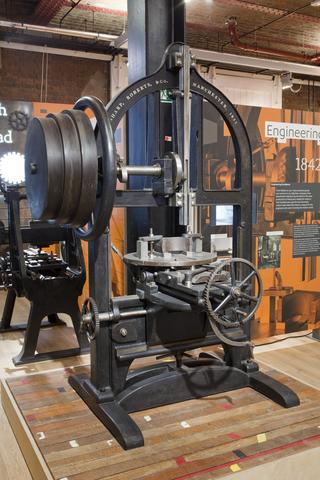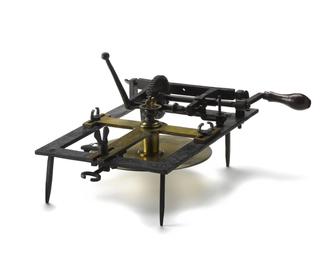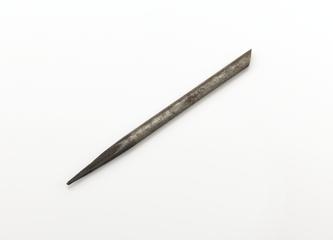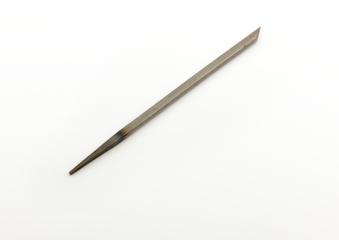
Prototype Mark 1 Workmate
- Made:
- 1967 in Hoddesdon, Hertfordshire and United Kingdom




















Prototype Mk.1 mini bench, predecessor of the production ‘Workmate’ combined vice and workbench, by Mate Tools Ltd, Hoddesdon, Hertfordshire, UK, 1967
In 1967, work began to commercialise Ron Hickman's 'Workmate' idea. This workbase could be disassembled to pack flat, but once assembled took up a great deal of storage space. The next bench had to be folding. The biggest problem was that, sold with a vice, the bench was too heavy and too expensive. Folding was also very difficult with the vice on top.
It was at this point that Hickman was struck by the visual resemblance of the two vice jaws with the two beams that formed the work surface.
‘It had been a kind of miniature workbench or double topped sawhorse. Suddenly it became the world’s biggest and most versatile vice standing on legs!’ [Ron Hickman]
The problem then became how to operate the vice, and keep the slot clear to allow sawing? Also, keeping a large wooden vice parallel would be difficult. The next development was the realisation that the vice did not need to be kept in parallel, that two independent screws would allow the vice to move angularly, and then anything could be clamped. Being unwilling to allow the whole top to move around to act as the vice, a third clamping bar was introduced.
This prototype was the first of the folding models. The sketches below show the development of the parallel folding wishbone suspension systems common in sorts cars at the time.
It was at this point in December 1967 that Ron Hickman began to approach manufacturers. He was turned down first by Black & Decker, then by Stanley, Record, Marples, Burgess, and Polycell. They all failed to appreciate its potential. Stanley estimated its potential in ‘dozens rather than hundreds’. Eventually, Ron Hickman became convinced that the only person with the commitment to market the idea was himself.
Details
- Category:
- Hand and Machine Tools
- Object Number:
- 2020-116
- Materials:
- steel (metal) and wood (unidentified)
- Measurements:
-
overall: 183 mm x 674 mm x 780 mm,
- type:
- workmate




